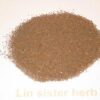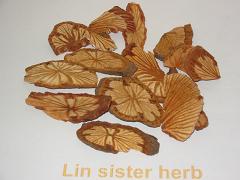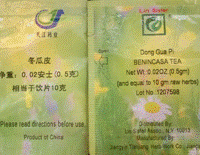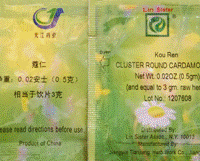MILLETTIA *
$10.00
Out of stock
Description
Origin:
The vine stem of Spatholobus suberectus Dunn, a climbing shrub, of the family Leguminosae. Native to east Asia, the plant is grown in Malaysia, Indonesia, Burma, China and Japan.
The stem, containing a red resin, is labeled as “jixueteng” in Chinese. The Chinese name describes the material as a stem (teng) with a sap having a color, which is reddish brown, reminiscent of dried chicken’s blood (ji = chicken; xue = blood).
Millettia stem is a relatively recent addition to the Chinese Materia Medica, first recorded two centuries ago in the ‘Bencao Gangmu Shiyi’ (Omissions from the Grand Materia Medica, 1765 A.D.), and it did not have a strong reputation among traditional herbalists during the 20th century prior to the 1980’s. The situation has changed dramatically in recent years: millettia has been elevated to one of the commonly used herbs of modern Chinese medicine.
In China, millettia is mainly produced in Guangxi province. Harvested in autumn and winter, the branches and leaves are removed from the stem, then the stem is sliced and dried in the sun for use when raw or after decocting into millettia ointment.
Properties:
Bitter and sweet in flavor, warm in nature, it is related to the liver channel.
Functions:
Promotes blood circulation to nourish the blood, regulates menstruation, relaxes muscles and tendons to activate the flow of qi and blood in the channels and collaterals, warms the waist and knees, and cures paralysis caused by wind.
The herb is used for blood deficiency and blood stasis syndrome manifesting as anemia, dysmenorrhea (painful menstruation), menstrual bleeding, or soreness, numbness, and immovability of extremities.
Applications:
1. Treats irregular menstruation, obstructed menstruation, amenorrhea (abnormal absence or suppression of menses) due to blood deficiency, etc.:
This herb can not only promote blood circulation, but also nourish the blood, so it is applicable to syndromes due to blood stasis and blood deficiency.
a) Syndromes of menstruation due to blood stasis:
This herb is used in combination with safflower, chuanxiong (Rhizoma Ligustici Chuanxiong), nutgrass flatsedge rhizome (Rhizome Cyperi), etc., in order to promote blood circulation, remove blood stasis and regulate menstruation.
b) Syndromes of menstruation due to blood deficiency:
This herb is used in combination with prepared rehmannia, Chinese angelica, etc., in order to nourish the blood and regulate menstruation.
2. Treats rheumatism and arthralgia, numbness of the hands and feet, acroparalysis, jaundice due to blood deficiency, etc.:
This herb can nourish the blood to promote blood circulation and relax muscles and tendons to activate the circulation of qi and blood in the channels and collaterals.
a) Rheumatism, arthralgia and numbness of the hands and feet:
This herb is used in combination with antirheumatics.
b) Acroparalysis after apoplexy (stroke):
This herb is used in combination with drugs that replenish qi, nourish the blood, promote blood circulation and remove obstruction from the channels.
c) Jaundice due to blood deficiency:
This herb is used in combination with qi and blood tonics.
3. Treats leukopenia (a condition in which the number of white blood cells circulating in the blood is abnormally low):
In modern times, millettia stem syrup has produced certain curative effects in the treatment of leukopenia.
Dosage and Administration:
10-15 g.; 30 g. for large dosage.
Decoct or soak in wine or boil down into a soft extract for oral administration.
Cautions on Use:
No reports of toxicity or adverse reaction to millettia have been reported. However, high doses of millettia (15-30 g/day or more), such as used in correcting leukopenia, should not be used during pregnancy.
In general, Chinese literature recommends avoiding blood-vitalizing herbs during pregnancy, with certain limited exceptions
Additional information
| pinyin_name | |
|---|---|
| chinese_name | 雞血藤 |








Reviews
There are no reviews yet.